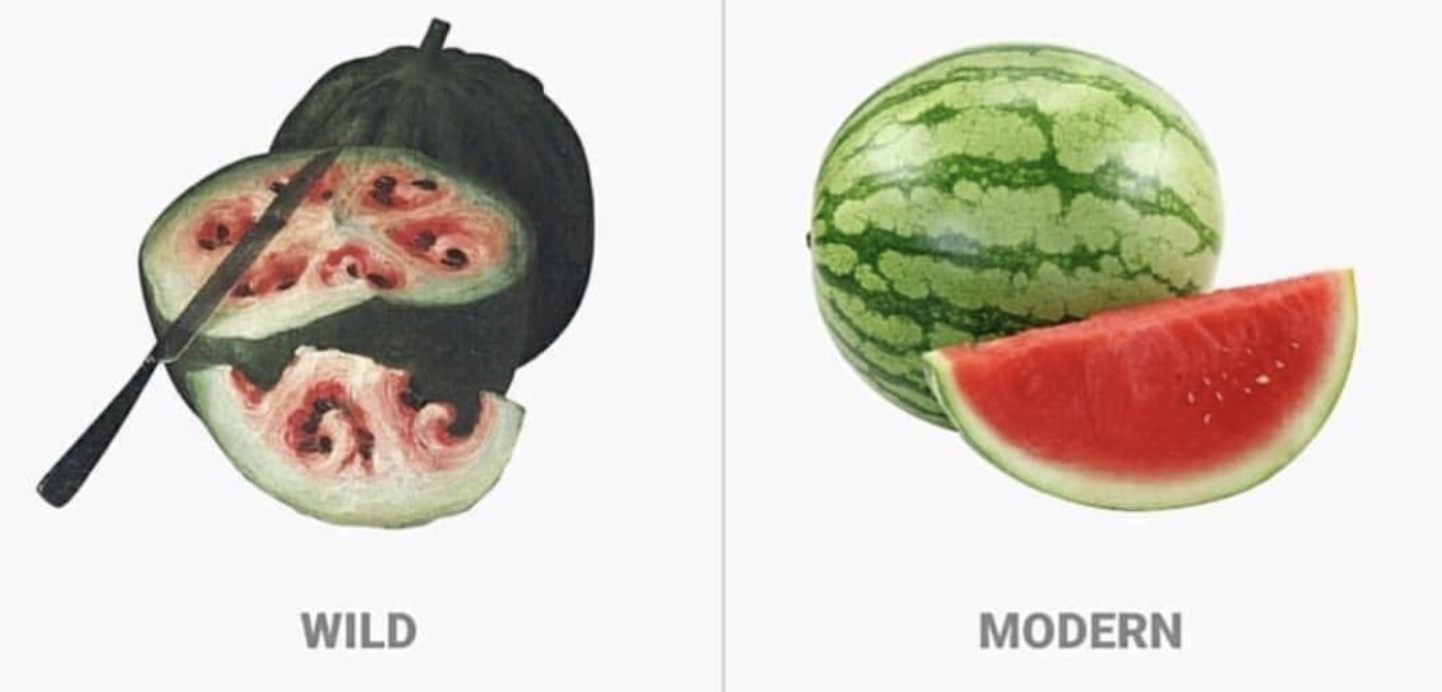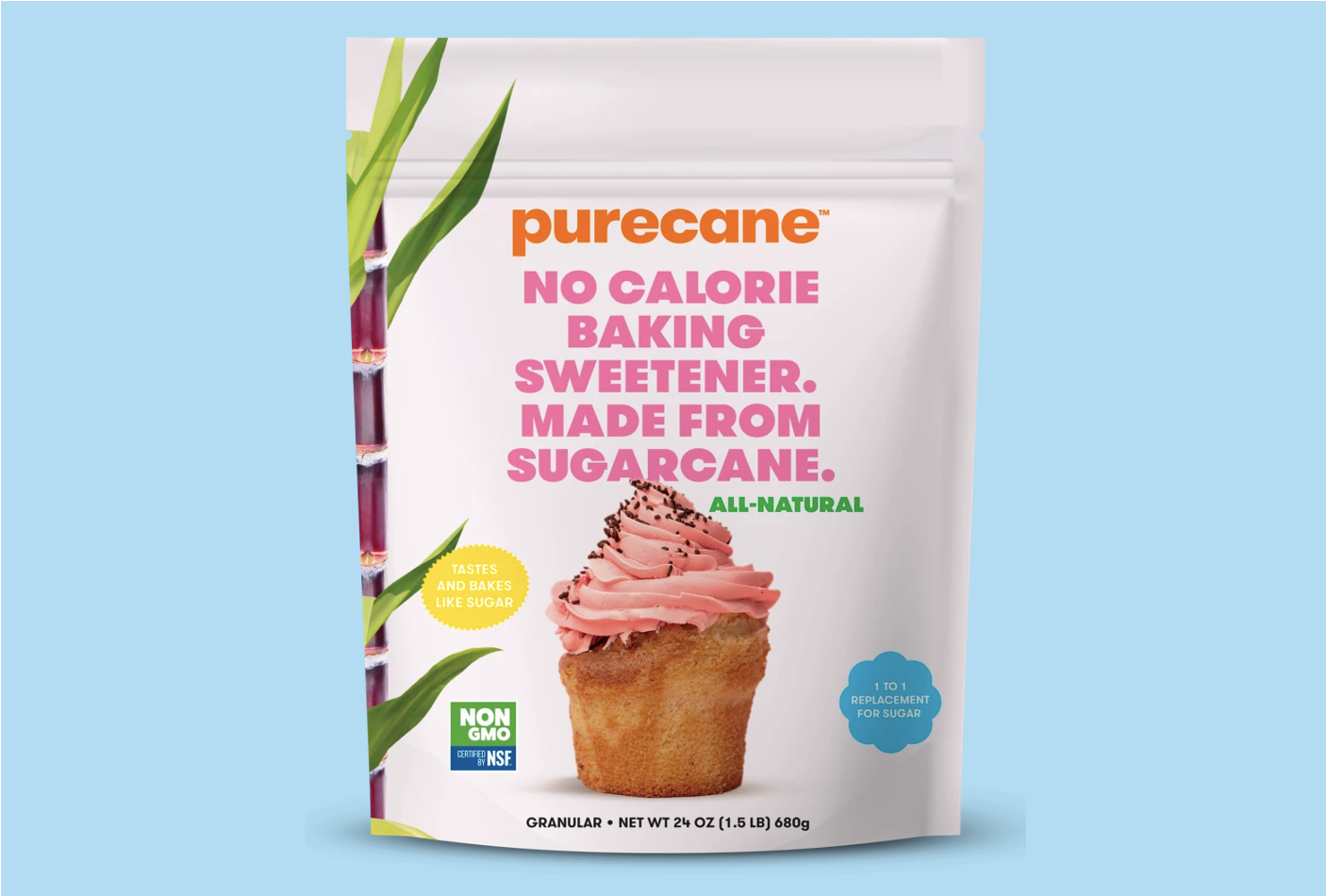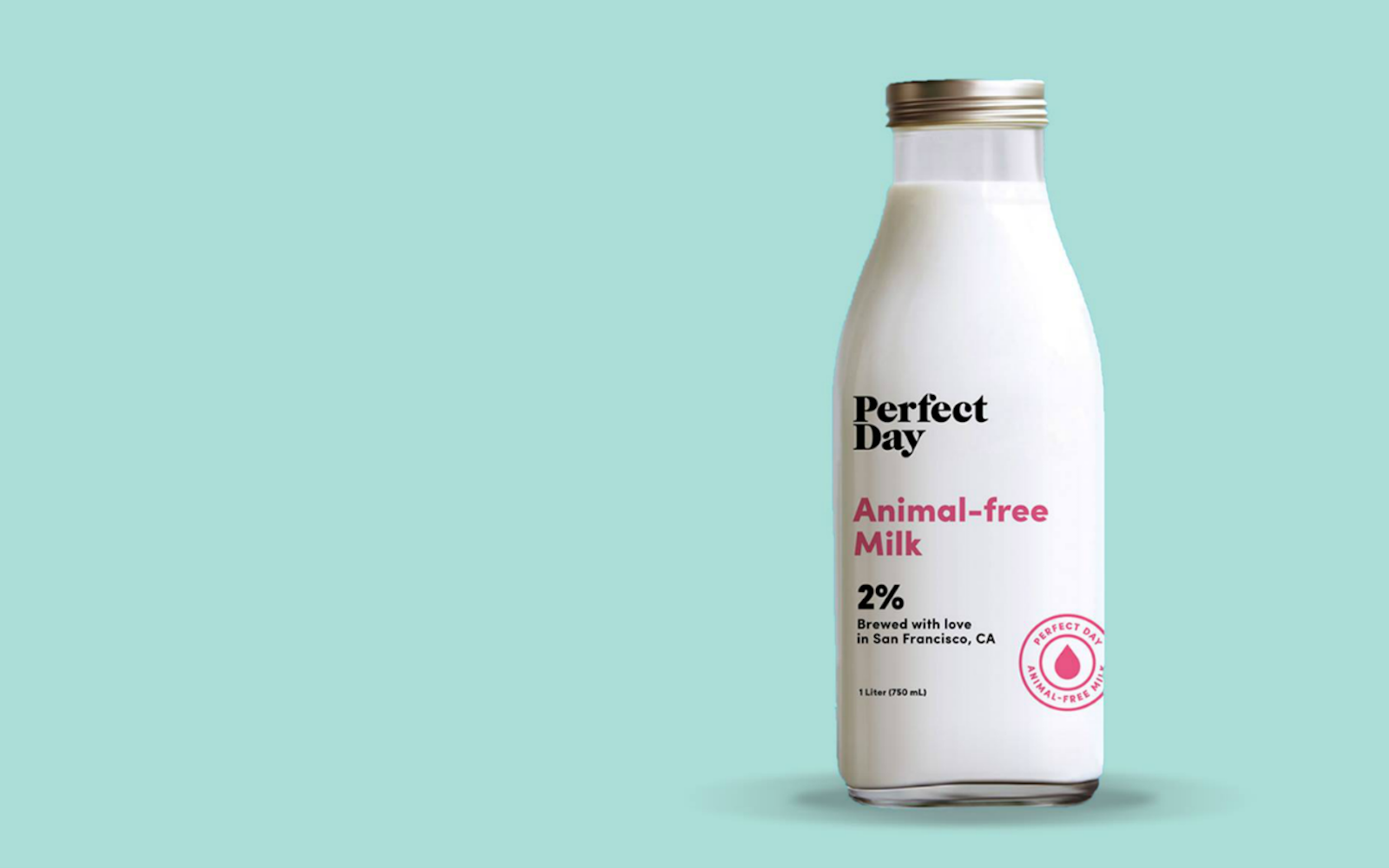Everyone seems to have an opinion on genetically modified organisms (GMOs). They’re either the savior technology we’ve been waiting for to feed the planet, or they’re the worst thing in our food system since trans fats. But what are GMOs?
每个人似乎都对转基因生物(GMO)有看法。 它们或者是我们一直在等待为行星提供食物的救星技术,或者是自反式脂肪以来我们食品系统中最糟糕的东西。 但是什么是转基因生物?
Simply put, GMOs are organisms (usually plants like soy and corn) that have had their DNA intentionally changed, presumably for some beneficial purpose like higher yield, higher nutrient density, or resistance to pesticides.
简而言之,转基因生物是有意改变其DNA的生物体(通常是大豆和玉米等植物),大概是出于某些有益的目的,例如更高的产量,更高的养分密度或对农药的抵抗力。
I think the most important aspect of making a decision on GMOs is to understand the difference between natural selection, artificial selection, genetic modification (or genetic engineering), and the different types of genetically engineered products.
我认为,就转基因生物做出决定的最重要方面是了解自然选择,人工选择,基因改造(或基因工程)与不同类型的基因工程产品之间的区别。
It’s important to note the difference between genetic modification and artificial selection in particular. But to understand artificial selection, we must first understand natural selection.
重要的是要特别注意基因修饰和人工选择之间的区别。 但是要了解人工选择,首先必须了解自然选择。
Evolution is driven by the process of natural selection, whereby the plants and animals that are most fit for their environment have the highest chance of surviving, mating, and passing on their genes. Natural selection happens over millions of years and is the driver behind fruits developing sweetness (to attract and be eaten by hungry animals, who then excrete the seeds in some other location), lions developing claws (to more effectively take down their prey, eat, and survive), and potato plants developing thick bulbous roots (to better store their energy underground in the form of starch and glucose).
进化是由自然选择的过程驱动的,因此最适合其环境的动植物具有最高的生存,交配和传递其基因的机会。 自然选择发生于数百万年,是水果发展出甜味 (吸引饥饿的动物并被其吃掉,然后将饥饿的动物排泄到其他地方)的驱动力,狮子养成爪子(更有效地砍掉猎物,进食,并生存),马铃薯植株生长出球根粗壮的根(以更好地将其能量以淀粉和葡萄糖的形式储存在地下)。
Artificial selection, on the other hand, is natural selection accelerated. Artificial selection refers to the process of humans intervening to, for example, continually mate the sweetest and least seedy watermelon plants together in the hopes that each generation will have sweeter and sweeter offspring fruits with fewer and fewer seeds. We don’t rely on nature to select the most “fit” plants; rather, based on criteria that drive our own agenda (like maximum sweetness), we determine which plants pass on their genes and which don’t.
人工选择,在另一方面,是加速自然选择。 人工选择是指人类进行干预的过程,例如,使最甜和种子最少的西瓜植株不断交配在一起,希望每一代都拥有越来越甜的种子,种子越来越少。 我们不依靠自然来选择最“合适”的植物; 而是根据驱动我们自己的议程的标准(例如最大的甜度),我们确定哪些植物通过其基因,哪些不通过。

Artificial selection is not genetic modification. Many supporters of GMO, even those who know better, group the two into the same category. Artificially selected (or “selectively bred”) plants and animals are ubiquitous, from sunflowers to chihuahuas. We’ve been artificially selecting organisms for thousands of years. Supporters of genetic modification claim that just as artificial selection is an accelerated version of natural selection, genetic modification is an accelerated version of artificial selection. Instead of waiting thousands of years for natural selection, or decades to centuries for artificial selection, genetic modification allows us to make changes to DNA and release those incorporated changes to commercial farmers in only a few years.
人工选择不是基因改造。 GMO的许多支持者,甚至是更了解的支持者,将两者归为一类。 人工选择(或“选择性繁殖”)的植物和动物无处不在,从向日葵到吉娃娃。 数千年来,我们一直在人为选择生物。 基因修饰的支持者声称,就像人工选择是自然选择的加速版本一样,基因修饰也是人工选择的加速版本。 通过基因改造,我们无需等待数千年的自然选择,也不需要等待数十至几个世纪的人工选择,而使我们能够对DNA进行更改,并将这些合并的更改释放给商业农民仅需几年。
Genetic modification refers to the process of genetically engineering the DNA of organisms by inserting or deleting genes. We can, for example, create mice that glow in the dark by inserting a jellyfish gene for green fluorescence.
基因修饰是指通过插入或缺失基因对生物体DNA进行基因工程的过程。 例如,我们可以通过插入用于绿色荧光的水母基因来创建在黑暗中发光的小鼠。
Instead of continually breeding (artificially selecting) the smallest dogs, we can genetically modify the dog genome to produce any sized dog we want. Instead of breeding the most nutrient dense varieties of rice together in the hopes that they’ll produce nutrient dense offspring rice, we can in one fell swoop modify the rice genome to produce more nutrients immediately, without having to wait for generations of slow progress.
代替不断繁殖(人工选择)最小的狗,我们可以对狗的基因组进行基因改造,以生产出我们想要的任何大小的狗。 与其一起育种最营养密集的水稻品种,以希望它们能生产出营养密集的后代水稻,我们不如一口气修改水稻基因组,立即生产更多的营养,而不必等待几代人的缓慢进展。
For some types of GMOs, there’s not necessarily a right answer to whether we “should” or “shouldn’t” do it. It’s a trade off. We may create super soy that has pesticides built into its DNA, is resistant to herbicide spray like glyphosate, and as a result has higher yields per acre and dollar, but that same soy could cause problems down the line with herbicide runoff into rivers and eventually oceans, threatening biodiversity.
对于某些类型的GMO,我们是否“应该”或“不应该”这样做并不一定是正确的答案。 这是一个权衡。 我们可能会制造出一种超级大豆,这种大豆的DNA内置了农药,对草甘膦等除草剂喷雾具有抗性,因此每英亩和美元的单产较高,但同一大豆可能会导致除草剂径流进入河流并最终导致问题海洋,威胁生物多样性。
Is it “worth it” to kill our oceans in order to feed more people for less money? Maybe, but maybe not. It’s certainly more profitable for the companies making the decisions to have genetically modified soy, and maybe the results they produce justify the negative externalities (societal costs) of polluted oceans and glyphosate-coated food products.
杀死我们的海洋,用更少的钱养活更多的人,是否“值得”? 也许吧,但也许不是。 对于做出转基因大豆决定的公司来说,肯定会更有利可图,也许他们产生的结果证明了污染海洋和草甘膦涂层食品的负面外部性 (社会成本)是合理的。
In some cases, the price of genetic modification is almost certainly worth it. In the Philippines, millions of people are deficient in Vitamin A. Researchers developed a type of rice, called “golden rice,” that is rich in beta-carotene, the plant version of Vitamin A that gives sweet potatoes and carrots their golden orange color. The rice was meant to provide a key missing nutrient to a malnourished population. While golden rice was embraced by many as a scientific and agricultural breakthrough, others felt it was a step too far in scientific intervention in our food system.
在某些情况下,基因改造的价格几乎可以肯定值得。 在菲律宾,数以百万计的人缺乏维生素A。研究人员开发了一种称为“黄金大米”的大米,其中富含β-胡萝卜素,这是维生素A的植物版本,可使甘薯和胡萝卜具有金橙色的颜色。 。 稻米旨在为营养不良的人群提供重要的营养物质。 虽然金米被许多人视为科学和农业突破,但其他人则认为这是对我们的食品系统进行科学干预的一步。
In 2013, anti-GMO protesters uprooted experimental golden rice fields before the genetically modified crop had a chance to nourish the Philippines’ people. Golden rice has not been re-introduced to the malnourished country, which continues to struggle with Vitamin A deficiency.
2013年,反转基因抗议者在转基因作物有机会滋养菲律宾人民之前,将实验性的金色稻田连根拔起。 尚未将黄金大米重新引入营养不良的国家,该国仍在与维生素A缺乏症作斗争。
Many GMO crops are patented by companies like Bayer and Dupont, which restrict farmers from replanting seeds the following year without paying royalties. However, golden rice has been offered free of patent fees, allowing farmers to plant and replant seeds without paying royalties. While there are certainly concerns around a multinational company “owning” a seed, golden rice may be one of the scenarios where the pros outweigh the cons, assuming that the Vitamin A levels in the rice don’t deteriorate and are in fact enough to nourish Vitamin A deficient populations.
许多转基因作物都获得了拜耳和杜邦等公司的专利,这些公司限制农民在第二年不支付特许权使用费的情况下补种。 但是,向黄金大米免费提供专利费,使农民无需支付特许权使用费即可种植和再种种子。 尽管跨国公司肯定拥有“种子”的担忧,但假设大米中的维生素A含量不会变质并且实际上足以养分,那么金米可能是利弊大于利的一种情况。维生素A缺乏人群。
Would it be a healthier solution to provide malnourished populations with sweet potato, leafy vegetables and fresh fruit as sources of Vitamin A? Yes, absolutely, but that’s a much harder problem to solve. Unlike fruits and vegetables, grains like rice don’t spoil quickly, so they’re easier to distribute to rural and poor areas where solutions are needed most desperately. Genetically modified rice is certainly a band-aid to fix a vitamin deficiency problem–it doesn’t fix the root causes–but we should still put that band-aid on and stop the bleeding, while we simultaneously develop a longer term solution.
向营养不良的人群提供红薯,叶类蔬菜和新鲜水果作为维生素A的来源,这将是一种更健康的解决方案吗? 是的,绝对,但这是一个很难解决的问题。 与水果和蔬菜不同,大米等谷物不会很快变质,因此它们更容易分配到最需要解决方案的农村和贫困地区。 转基因大米无疑是解决维生素缺乏症问题的创可贴-不能解决根本原因-但我们仍应继续使用该创可贴并止血,同时我们应制定长期解决方案。
Sometimes, unnatural problems call for unnatural solutions. It’s not natural (from an evolutionary perspective) for humans to rely so heavily on grains like rice for nourishment. As a result of this unnatural problem, large populations are deficient in key nutrients like Vitamin A. Without human intervention, the “natural” solution is that those who are deficient will eventually die of malnourishment and maybe future generations of Filipinos will develop the ability to synthesize Vitamin A from other more plentiful substances. That is an outcome that very few people would see as a victory. Golden rice, albeit not entirely “natural,” may be the best unnatural solution for such an unnatural problem.
有时, 不自然的问题需要不自然的解决方案 。 从进化的角度来看,人类如此严重地依赖大米等谷物来营养是不自然的。 由于这个非自然的问题,大量人口缺乏诸如维生素A的关键营养素。如果没有人为干预,“自然”的解决方案是,那些缺乏营养的人最终将因营养不良而死亡,也许后代的菲律宾人将发展这种能力。从其他更丰富的物质中合成维生素A。 这是很少有人会认为是胜利的结果。 尽管并非完全是“天然”的,但黄金大米可能是解决此类非天然问题的最佳非天然解决方案。
Fluorescent mice and golden rice are indisputably genetically modified organisms, but with recent advances in biotechnology, the line is beginning to blur between natural and unnatural, GMO and non GMO. Some food items are derived from genetically modified organisms, but aren’t GMO themselves. If you eat GMO rice, there’s no way around ingesting the genetically modified material; it’s in the DNA of the food you’re eating. However, if you consume natural compounds that are secreted from engineered organisms, there’s technically little-to-no genetically modified material in the compound.
荧光小鼠和金米无疑是转基因生物,但是随着生物技术的最新发展,天然和非天然,GMO和非GMO之间的界线开始模糊。 有些食品来源于转基因生物,但它们本身并非转基因生物。 如果您吃的是转基因大米,就无法摄取转基因材料。 它在您所吃食物的DNA中。 但是,如果您食用从工程有机体分泌的天然化合物,则该化合物中几乎没有或几乎没有经过基因改造的材料。
This is murky territory and consumer awareness is limited in these new applications of biotechnology. For example, Impossible Foods genetically modifies yeast cells by inserting soy genes that allow the yeast to produce heme, the iron-rich compound that makes the Impossible burger “bleed.” While the yeast is genetically engineered, the heme that is extracted from the yeast is not. It is, for all intents and purposes, identical to the heme found in animal tissue.
这是一个模糊的领域,在这些新的生物技术应用中,消费者的意识受到限制。 例如,不可能食品通过插入大豆基因对酵母细胞进行遗传修饰,大豆基因可以使酵母产生血红素,而血红素是富含铁的化合物,使不可能的汉堡“流血”。 虽然酵母是经过基因工程改造的,但不是从酵母中提取的血红素。 出于所有目的和目的,它与在动物组织中发现的血红素相同。
Another example of this gray area between GMO and non GMO is Purecane, Amyris’s new zero calorie sugar substitute. The secret ingredient in Purecane is Reb M, one of the compounds that gives stevia its sweet flavor. The same way that Impossible Foods engineers yeast to produce heme by inserting soy genes, Amyris engineers yeast to produce Reb M by inserting stevia genes. Is the Reb M a GMO product? Some would say yes, others would say no.
转基因生物和非转基因生物之间的这一灰色区域的另一个例子是Amyris的新型零卡路里糖替代品Purecane 。 Purecane中的秘密成分是Reb M,它是赋予甜叶菊甜味的化合物之一。 与Impossible Foods工程师通过插入大豆基因发酵产生血红素的方法相同,Amyris工程师通过插入甜叶菊基因发酵产生Reb M的酵母。 Reb M是GMO产品吗? 有些人会说是,其他人会说不。

In fact, even third party GMO certifiers disagree. Purecane is certified non GMO by NSF International–the world’s second largest certification group–but does not have the coveted butterfly from The Non-GMO Project. As long as genetic material in the final product is below a certain concentration (0.9%), NSF specifically allows extracted compounds from genetically modified organisms to be labeled non GMO, whereas The Non-GMO Project’s requirements are more fluid and dependent on the entirety of the production process; its definitions of GMO are not as clearly defined.
实际上,即使是第三方GMO认证方也不同意。 Purecane已由NSF International(全球第二大认证组织)认证为非转基因生物,但没有The Non-GMO Project令人垂涎的蝴蝶。 只要最终产品中的遗传物质低于一定浓度(0.9%),NSF就会特别允许将从转基因生物中提取的化合物标记为非转基因生物,而“非转基因生物项目”的要求则更加不确定,并取决于生产过程; 它对转基因生物的定义没有明确定义。
Perfect Day, which just raised $300 million in a Series C, uses genetically modified cells to produce dairy proteins. If the protein from Perfect Day is identical to the protein from cow’s milk, is it GMO? The jury is still out. If there’s enough demand for an animal-free milk alternative (as the rise of plant-based milk suggests), maybe it doesn’t matter.
Perfect Day刚刚在C轮融资中筹集了3亿美元,它使用转基因细胞生产乳蛋白。 如果“完美日”中的蛋白质与牛奶中的蛋白质相同,那么它是否是转基因生物? 陪审团仍在。 如果对无动物奶的替代品有足够的需求(如植物奶的兴起表明),也许没关系。

The tides of consumer preference are constantly changing, and I would guess that the momentum of eating “more sustainably” will outweigh any GMO backlash, for better or for worse. A product’s GMO status is not the only variable in determining whether it should or shouldn’t exist. There are products that are non GMO, but terrible for our health and planet; and there are others that are GMO, but save millions of lives per year. Insulin, for example, was arguably the world’s first true GMO product and millions of diabetics rely on it every day.
消费者偏好的潮流在不断变化,我想“吃得更持久”的势头将超过任何转基因生物的反弹,无论好坏。 产品的GMO状态不是确定是否应该存在的唯一变量。 有些产品不是非转基因产品,但会危害我们的健康和地球; 还有其他一些是转基因生物,但每年挽救了数百万人的生命。 例如,胰岛素可以说是世界上第一个真正的转基因产品,每天都有数百万糖尿病患者依赖它。
Since the advent of agriculture, humans have continually introduced new tools and technologies to solve problems. Often those problems are caused by a previous generation’s technologies. It is a never-ending cycle of introducing technology to fix problems caused by technology. One solution is to give up technology all together and embrace a lifestyle that more closely resembles how we lived 10,000 years ago–which, for the record, I’m all for–but the path we’re on seems to be one where we continually invent new technology to fix problems caused by old technology.
自农业问世以来,人类不断引入新的工具和技术来解决问题。 这些问题通常是由上一代技术引起的。 这是引入技术以解决技术引起的问题的永无止境的循环。 一种解决方案是放弃所有技术,拥抱一种更类似于我们一万年前的生活方式(据记录,我全力以赴),但我们走的路似乎是我们不断追求的路发明新技术以解决由旧技术引起的问题。
Golden rice, insulin, and Reb M are band-aid efforts to fix the problems introduced by sugar and grain agriculture; Impossible’s heme and Perfect Day’s milk proteins are technologies that attempt to address the problems introduced by modern animal agriculture. If history is any indication, these technologies address one set of problems, but create another.
金米,胰岛素和Reb M是解决糖和谷物农业带来的问题的创可贴。 Impossible的血红素和Perfect Day的乳蛋白是试图解决现代动物农业带来的问题的技术。 如果历史可以说明问题,那么这些技术可以解决一组问题,但会引发另一组问题。
To make a blanket statement about whether GMOs are “good or bad” is akin to making a blanket statement about fire; it’s great when it cooks our food, it’s not so great when it burns down our houses. All technology is a double edged sword. GMOs are no different.
对转基因生物是“好是坏”做出笼统的声明,类似于对火灾进行笼统的声明。 当它煮我们的食物时很棒,当它烧毁我们的房子时不是很好。 所有技术都是一把双刃剑。 转基因生物没有什么不同。
翻译自: https://medium.com/@jeffnobbs/all-gmos-are-not-created-equal-b54fc949ad98




















 1195
1195











 被折叠的 条评论
为什么被折叠?
被折叠的 条评论
为什么被折叠?








